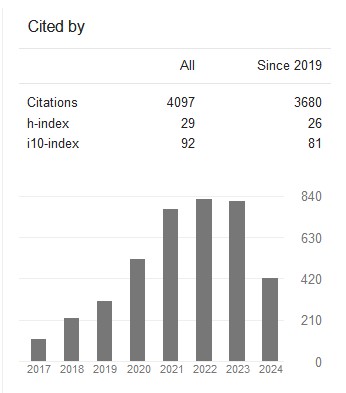Experimental study and calculation of the electron transfer coefficients on the dissolution behavior of chitosan in organic acids( Vol-3,Issue-6,June - June 2017 ) |
|
Author(s): Prudencio Fidel Pacheco-Garcia, Andrea Perez-Gonzalez, Alejandra Ramos-Flores, Lillhian Arely Flores-Gonzalez, Juan Manuel Lopez-Oglesby, Manuel Gonzalez-Perez |
|
Keywords: |
|
|
Chitosan, Electron Transfer Coefficient (ETC), HyperChem, Organic Acid, Quantum Chemistry. |
|
Abstract: |
|
|
Chitosan (CH) consists of water-insoluble N-acetylglucosamine and D-glucosamine molecules and has a higher solubility at a pH below six. This studyevaluated the solubility of chitosan in solutions of organic acids for the formation of films. HyperChemTMsoftware was used to perform the quantum analysis. In the experimental trials, the total soluble mass (TSM) and the viscosity of the solutions were measured by capillary viscometer. The chitosan filmswere made by the plate melting method, and the filmcharacteristics were evaluated. A quantum simulation suggested that lactic acid (LA) has a greater stability to react with chitosan. It was then verified experimentally that LA is a better solvent for chitosan due to the increase in its viscosity. The chemical interaction between CH and LA in solution favors the polymerization of films with better physical properties. We thereforeconclude that the uniformity in the formation of films of this polymer depends on the chemical interaction between the CH and the acid and not on the degree of solubility of the polymer. |
|
Cite This Article: |
|
| Show All (MLA | APA | Chicago | Harvard | IEEE | Bibtex) | |
Share: |
|

 DOI:
DOI: 



























